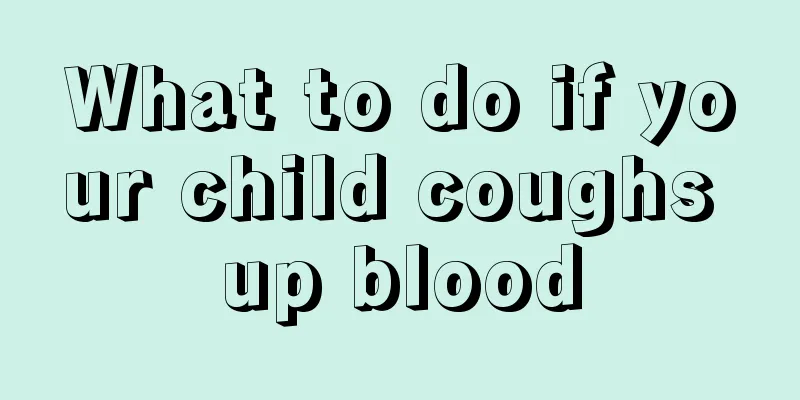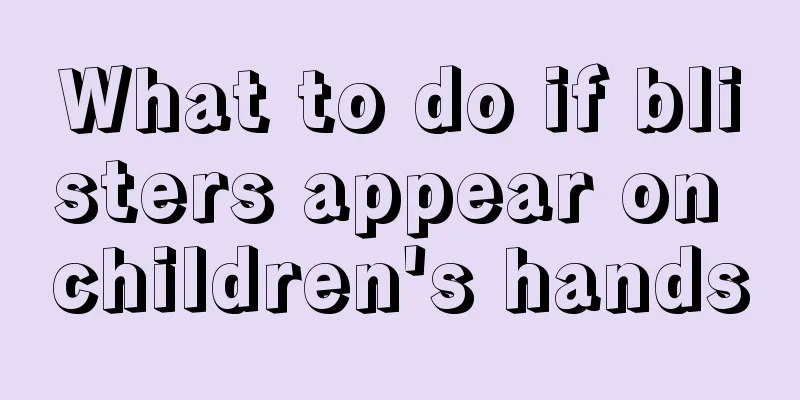What to do if your child coughs up blood

|
Children's colds are something that worries parents. What I worry about is whether the child will have symptoms such as fever and cough due to a cold, which will make the child feel uncomfortable; the annoying thing is that the child will not take medicine obediently when he is sick, and once the child has a cough, even if he takes medicine obediently, the cough may recur. Children coughing can also cause blood streaks to appear. What should I do?
Pneumonia refers to inflammation of the terminal airways, alveoli and lung interstitium, which can be caused by pathogenic microorganisms, physical and chemical factors, immune damage, allergies and drugs. Bacterial pneumonia is the most common type of pneumonia and one of the most common infectious diseases. The pathogens that cause pneumonia are very complex, including bacteria, viruses, mycoplasma, as well as physical and chemical factors such as radiation and inhaled foreign matter. Among them, pneumonia caused by pneumococcus is the most common. The main clinical manifestations include fever, cough, sputum, dyspnea, and inflammatory infiltration shadows can be seen on lung X-rays, which may be accompanied by chest pain or dyspnea. In children with pneumonia, the symptoms are often not obvious, and there may be a mild cough. Bacterial pneumonia is treated with antibiotics and can be cured in 7 to 10 days. Viral pneumonia is a milder form of the disease that cannot be cured by antibiotics.
1. Anti-infection treatment is the most important part of pneumonia treatment. Treatment of bacterial pneumonia includes empirical therapy and treatment directed at the pathogen. The former mainly selects antimicrobial drugs that may cover pathogens based on the epidemiological data of pneumonia pathogens in the region or unit; the latter selects antimicrobial drugs that are sensitive in in vitro tests based on the culture and drug sensitivity test results of respiratory or lung tissue specimens. In addition, the selection of antimicrobial drugs and routes of administration should be based on the patient's age, underlying diseases, aspiration, whether the patient is in a general ward or intensive care unit, length of hospitalization, and severity of pneumonia. 2. For young and middle-aged patients with community-acquired pneumonia without underlying diseases, penicillins and first-generation cephalosporins are commonly used. Due to the high resistance rate of Streptococcus pneumoniae to macrolide antibiotics in my country, macrolide antibiotics are not used alone to treat pneumonia caused by this bacteria. Fluoroquinolones (moxifloxacin, gemifloxacin and levofloxacin) that are specifically effective for respiratory infections can be used for resistant Streptococcus pneumoniae. 3. For the elderly, patients with underlying diseases or community-acquired pneumonia who require hospitalization, fluoroquinolones, second- and third-generation cephalosporins, β-lactam/β-lactamase inhibitors, or ertapenem are commonly used, and can be combined with macrolides.4. Second- and third-generation cephalosporins, β-lactam β-lactamase inhibitors, fluoroquinolones or carbapenems are commonly used for hospital-acquired pneumonia. 5. The treatment of severe pneumonia should first select broad-spectrum strong antibiotics, and should be used in sufficient doses and in combination. Because the initial empirical treatment is insufficient or unreasonable, or the antimicrobial drugs are adjusted according to the etiological results, the mortality rate is significantly higher than that of those with correct initial treatment. Severe community-acquired pneumonia is often treated with β-lactams combined with macrolides or fluoroquinolones; fluoroquinolones and aztreonam are used for those who are allergic to penicillin. Hospital-acquired pneumonia can be treated with fluoroquinolones or aminoglycosides combined with any of the anti-Pseudomonas β-lactams, broad-spectrum penicillins/β-lactamase inhibitors, or carbapenems, and, if necessary, with vancomycin, teicoplanin, or linezolid. |
<<: Why does a child cough when lying down?
>>: What to do if your child coughs, especially after sleeping
Recommend
Three different methods of reducing fever in children
When parents know that their children have a feve...
What are the symptoms of zinc deficiency in one-year-old children?
Children of different ages have different reactio...
What foods are good for the kidneys?
The kidney is the most important part of the body...
Symptoms of systemic lupus erythematosus in children
Everyone must have talked about systemic lupus er...
What is the reason why newborns yawn frequently?
Newborn babies always bring endless surprises to ...
What should I do if my child has mild thalassemia?
The so-called thalassemia is actually thalassemia...
Is it good for children to learn Taekwondo?
Nowadays, we often see some parents taking their ...
What should children with poor eyesight eat?
Nowadays, many children suffer from myopia or hyp...
What should I do if my child has no appetite?
It is very painful for mothers when their childre...
Introduction to the fastest growth and development period of children
The fastest growth and development period for chi...
What causes children to grind their teeth?
Medically speaking, it is normal for children to ...
What should I do if my baby has a cold and stuffy nose?
The younger the baby is, the less sound his immun...
Winter Newborn Care
Autumn and winter are the seasons when newborns a...
What to do if your newborn baby catches a cold
Newborn babies are often susceptible to various d...
What to do if you are allergic to egg white or yolk
Allergies are sometimes related to one's own ...









